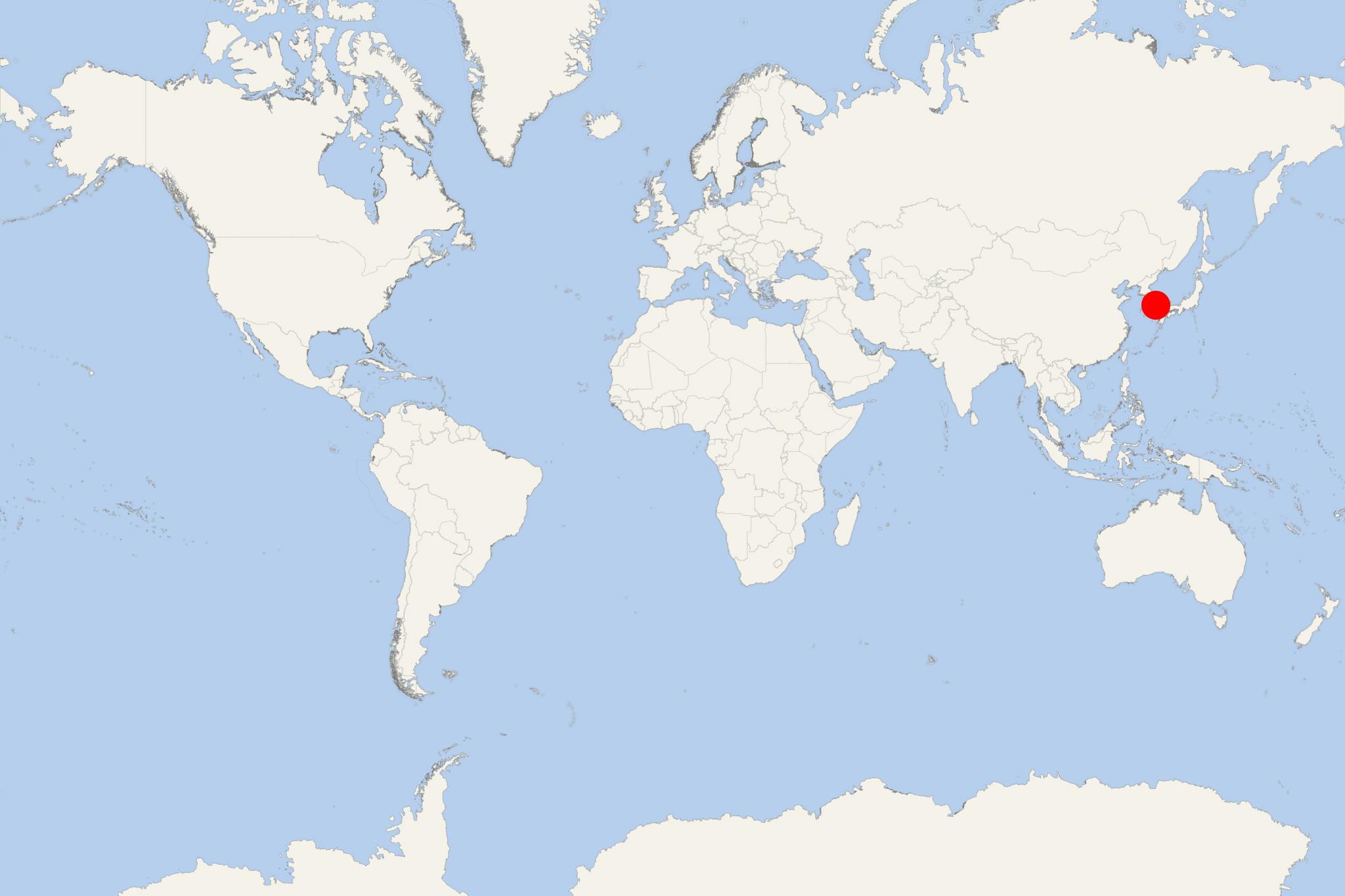Ulsan (Gyeongju, Korea)
Cruise Port schedule, live map, terminals, news
Ulsan is a large port and metro city (ranked South Korea's 7th largest metropolis) with population over 1,17 million. On the east, the city bounders Japan Sea (East Sea). Busan (country's second-largest city - after the capital Seoul) is approx 70 km (44 mi) to the south.
Ulsan City is Korea's industrial powerhouse, having the world's largest automobile assembly plant (Hyundai Motor Company), world's largest shipbuilding yard (Bangeojin - Hyundai Heavy Industries) and the world's 2nd largest oil refinery (SK Energy). The metro city has the highest GDP per capita in South Korea. Part of Ulsan City is Port Bangeojin - shipbuilding port owned by Hyundai Corporation.
Jangsaengpo is Korea's only whale museum with whaling-related artifacts (whaling in Korea was prohibited in 1986). It also offers various information related to marine ecosystems and is a space for research and education. Among the most popular tours are "whale cruises" leaving roundtrip from Port Jangsaengpo.
Ulsan Grand Park (downtown) is Korea's best and largest eco-park, with land area of 3,64 km2 (1,4 mi2). Taehwagang River Grand Park (bamboo grove) is one of Ulsan's 12 scenic beauties. Park's bamboo grove and the river are connected. The sand beaches Ilsan and Jinha provide great views of Daewangam Park and its lush pine forest.
Port Ulsan
Port Ulsan (locode KRUSN) is located at the southeastern corner of the Korean Peninsula. This is a natural harbour port consisting of 3 sub-ports - Ulsan Main Port (handles ~2/3 of all cargoes), Onsan Port, and Mipo Dockyard.
The seaport is managed by Ulsan Regional Maritime Affairs and Fisheries Office (port authority company). The harbour is a natural (river) and has a turning basin (for vessels navigating the channel) and no tide restrictions.
Max water depths are 12 m (40 ft) in the channel and at anchorage sites, 9 m (30 ft) at cargo piers and 10 m (35 ft) at the Oil Terminal. Pilotage is compulsory - all vessels navigating in the channel are assisted by tugboats. Marine cargo loading and unloading operations are at wharves.
As cargo handling equipment, Port Ulsan has lifts (capacity up to 100 tons), mobile and floating cranes. The services offered to cargo vessels, oil tankers and container ships include providing supplies (provisions, fuel, water), ship repairs, drydock, dirty ballast disposal.
In late-June 2020, a Korean consortium won the contract to build an LNG tank terminal in Ulsan port's northern part. The consortium includes Daewoo Engineering & Construction (51%) and SK Engineering & Construction Co Ltd (49%). The facility will be operated by Korea Energy Terminal - a joint venture company of Korea National Oil Corporation (49,5%), SK Gas (45,5%) and Singapore’s MOL Chemical Tankers (5%). The project (budgeted KRW 324,3 billion / ~USD 270 million / EUR 240,5 million) includes the construction of one LNG tank (gas capacity 215,000 kiloliters) plus other facilities. The terminal is planned to start commercial operations in June 2024.
Due to the COVID crisis, Port Ulsan paused its cruise shipping operations for 2 years (February 2020-2022).
Hyundai Mipo Dockyard
The Ulsan-based Hyundai Mipo Dockyard Co Ltd is the world's largest shipbuilder by annual GT-tonnage.
Operated by Hyundai Heavy Industries/HHI, the 1975-founded company produces a brand new USD 80+ million vessel every week.
Hyundai Mipo has ~50% share in the global production of general cargo ships/Product Carriers. The current facility was inaugurated in 1982.
The company specializes in shipbuilding (~96% of the business), as well as vessel conversions/refits and drydock repairs (~4%).
In the period 1982-2015, Hyundai Mipo repaired/converted ~11000 and built/delivered 700+ vessels, at a rate of ~70 units annually. By annual GT tonnage delivered, the company is ranked the world's 4th-largest.
Vessel types include cable and pipe laying ships, reefer (refrigerated cargo) ships, containerships, Ro-Ro/Ro-Pax ships (vehicle carriers and passenger ferries), supply and special vessels, drill ships.
- Cruise Industry

New Zealand's inter-island ferry company KiwiRail halts fleet modernization project
KiwiRail and the Korean shipbuilder Hyundai Mipo Dockyard (one of the world's largest shipbuilding companies) have mutually agreed to terminate the...
February 16, 2024 - Cruise Industry

South Korea’s Hyundai Mipo Dockyard cuts steel for first smart electric passenger ship
South Korea’s Hyundai Mipo Dockyard (one of the world's largest shipbuilding companies) started the construction on an electric propulsion...
October 24, 2021 - Cruise Industry

VIDEO: Isle of Man Steam Packet Co's new ferry MANXMAN powered by ‘World's Most Efficient Diesel...
Isle of Man UK/Douglas-based Steam Packet Company announced that its newbuild ferry MANXMAN will be powered by the world’s most efficient 4...
February 4, 2021 - show more news

 50°F
50°F 
 Mod. breeze
Mod. breeze